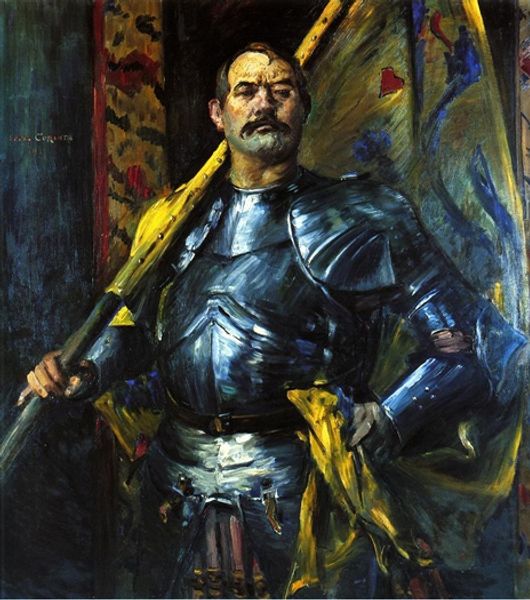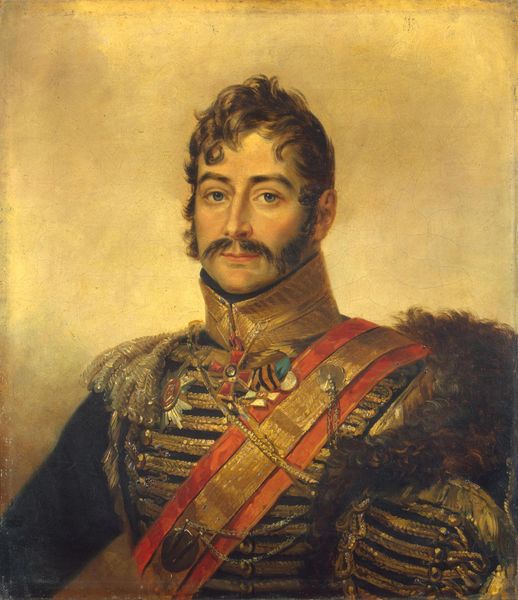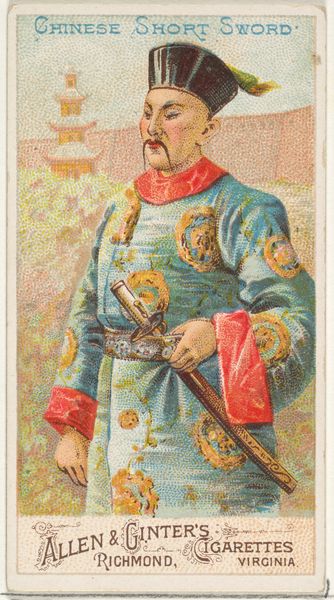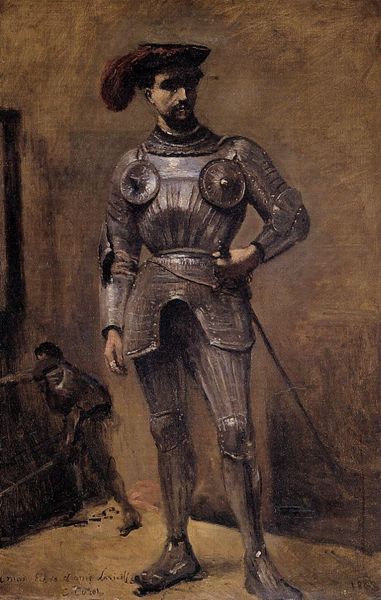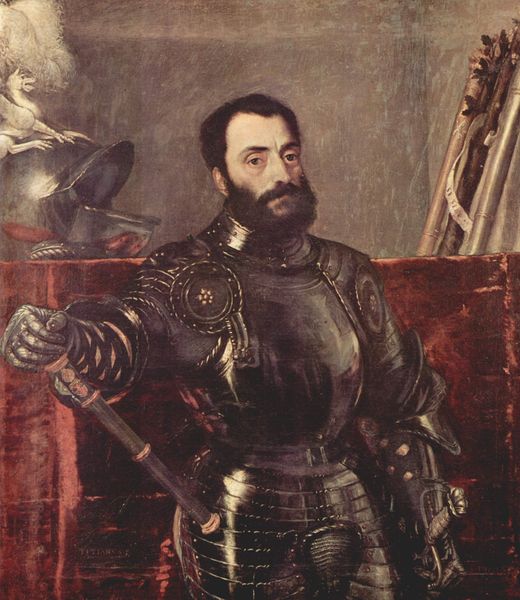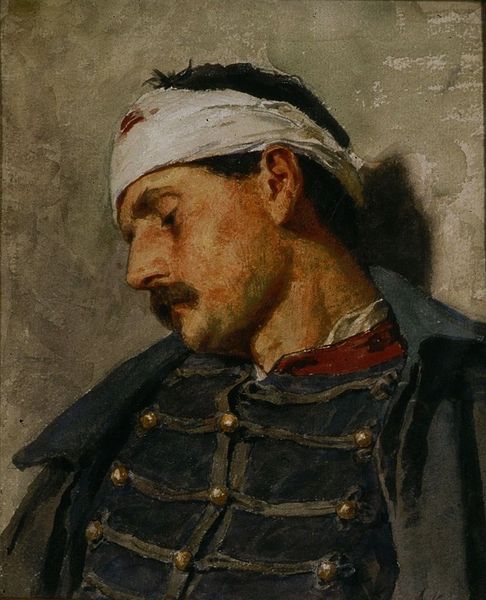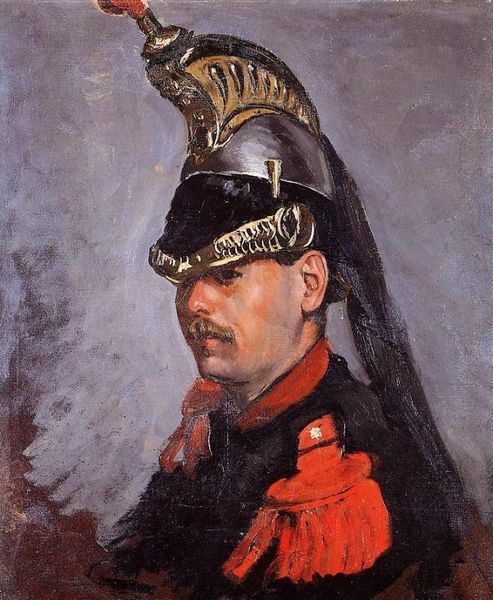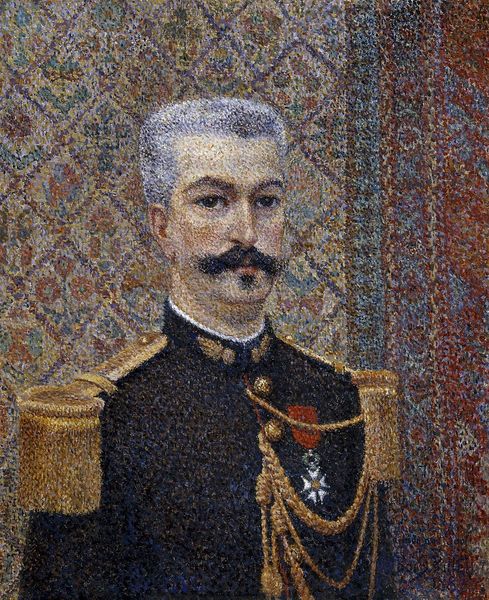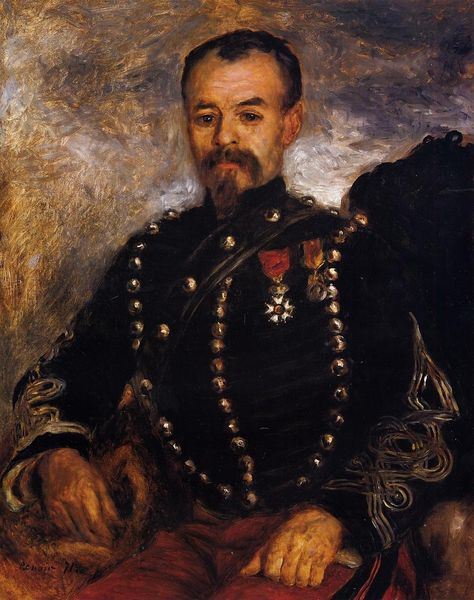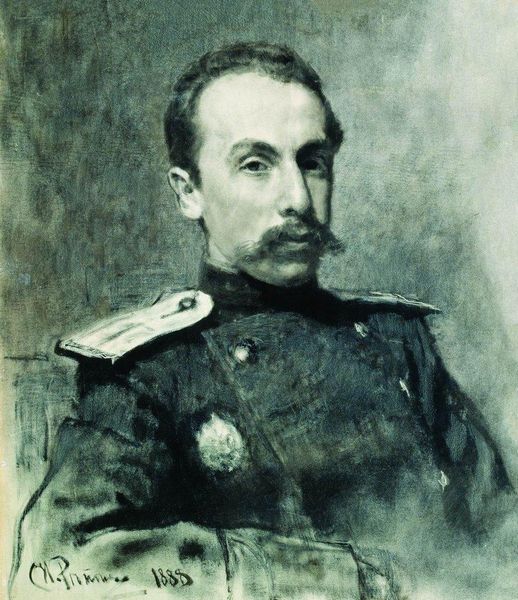
Dimensions: 100 x 90.5 cm
Copyright: Public domain
Editor: We're looking at "Portret Erazma Barącza" by Leon Wyczółkowski, painted in 1911 using oil. He's clad in full armor. There's a somber almost weighty feeling about this portrait; he’s a man ready for battle but also deep in thought. What's your interpretation of this work? Curator: This portrait speaks volumes about Polish identity at the turn of the century, particularly its fraught relationship with its own history. The anachronistic armor, in a painting done in 1911, isn’t merely decorative; it’s a deliberate invocation of Poland’s past glories. Consider how Wyczółkowski positions Barącz. Does he look confident or melancholic? Editor: Hmm, maybe a bit of both? He looks noble, even regal, but there is definitely something melancholic about the piece, too. Curator: Exactly. Now, knowing that Poland had been partitioned and ceased to exist as an independent nation for over a century before this portrait was painted, how does that knowledge shift your perception? The armor then transforms into a symbol of resistance and remembrance, but also perhaps, the weight of that history. Editor: That context changes everything. It's like he’s embodying a lost nation, burdened by its past but defiant nonetheless. The melancholy becomes the grief of occupation. Curator: Precisely! And the slightly theatrical air—the backdrop, the pose—hints at how identity itself was becoming a performance, a way to keep the idea of Poland alive through art and collective memory. Consider, what does it mean to perform your cultural identity when it’s being actively suppressed? Editor: I see. So, the romanticism isn’t just an aesthetic choice; it’s a political statement. A yearning for self-determination masked in historical garb. It feels particularly poignant, recognizing the historical moment. Curator: Indeed. By understanding the social and historical contexts, we can uncover the powerful statements layered within the visual representation. Editor: It's really interesting to look at art through a political lens. Thanks so much.
Comments
No comments
Be the first to comment and join the conversation on the ultimate creative platform.
